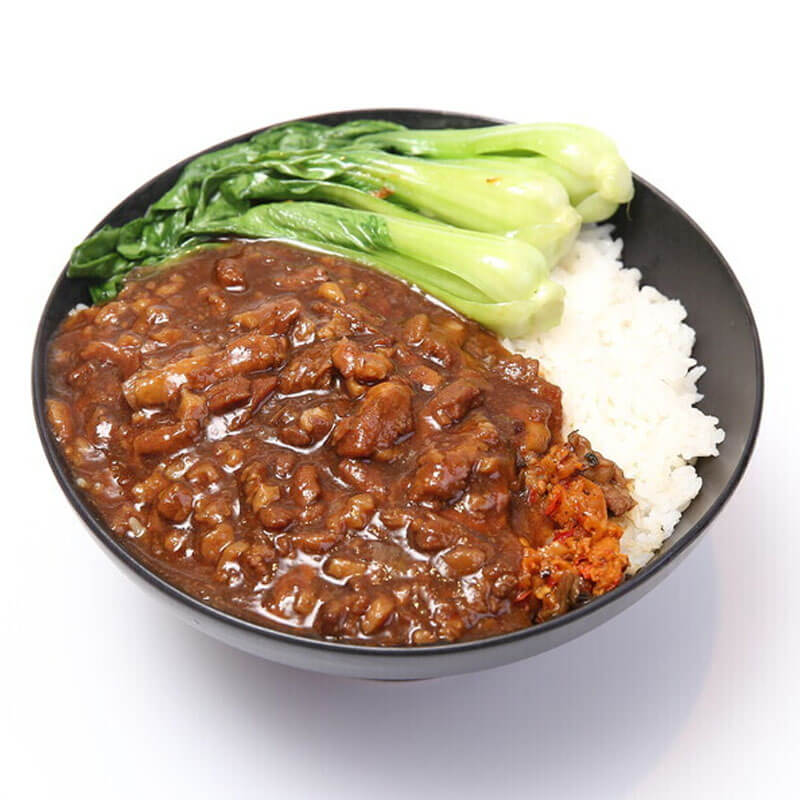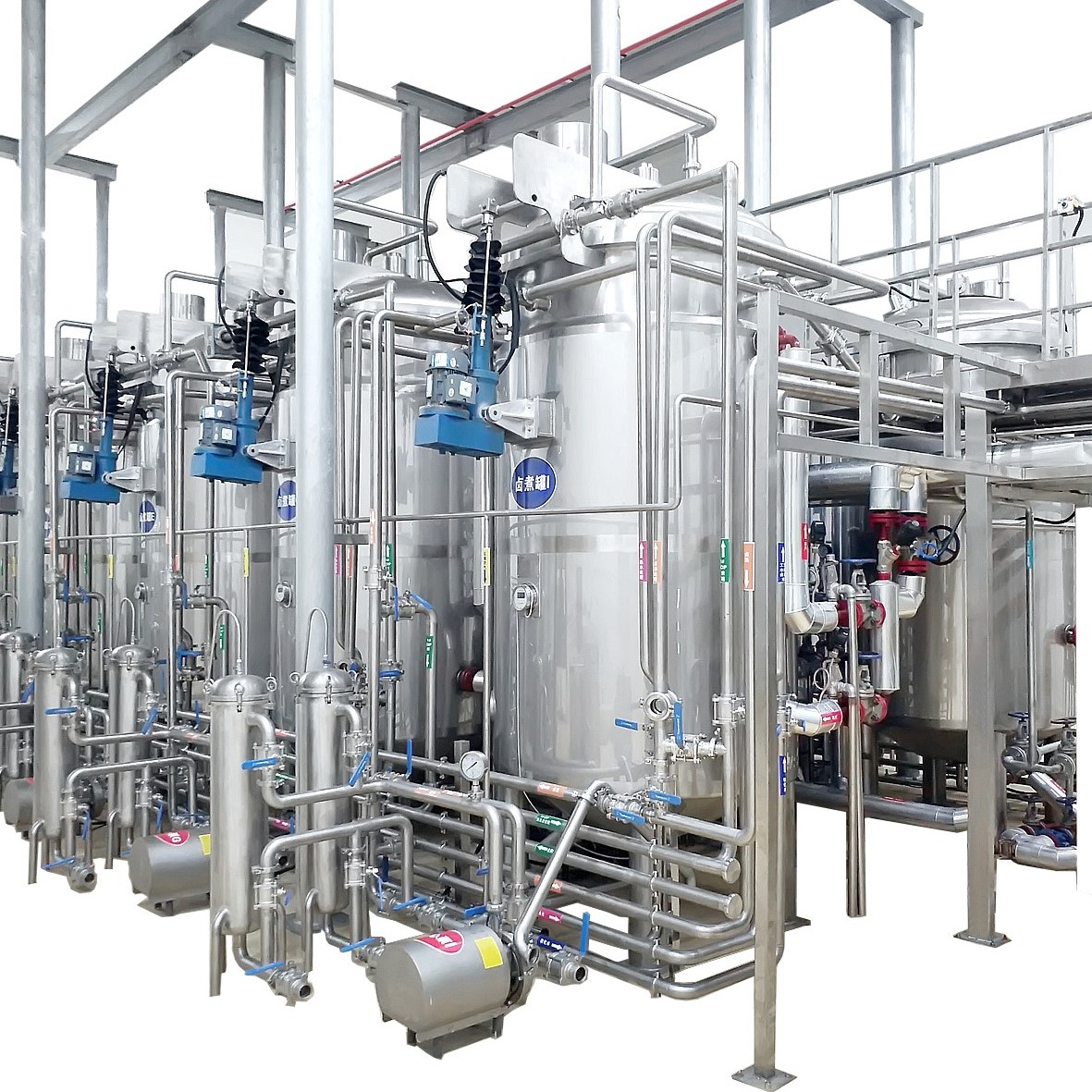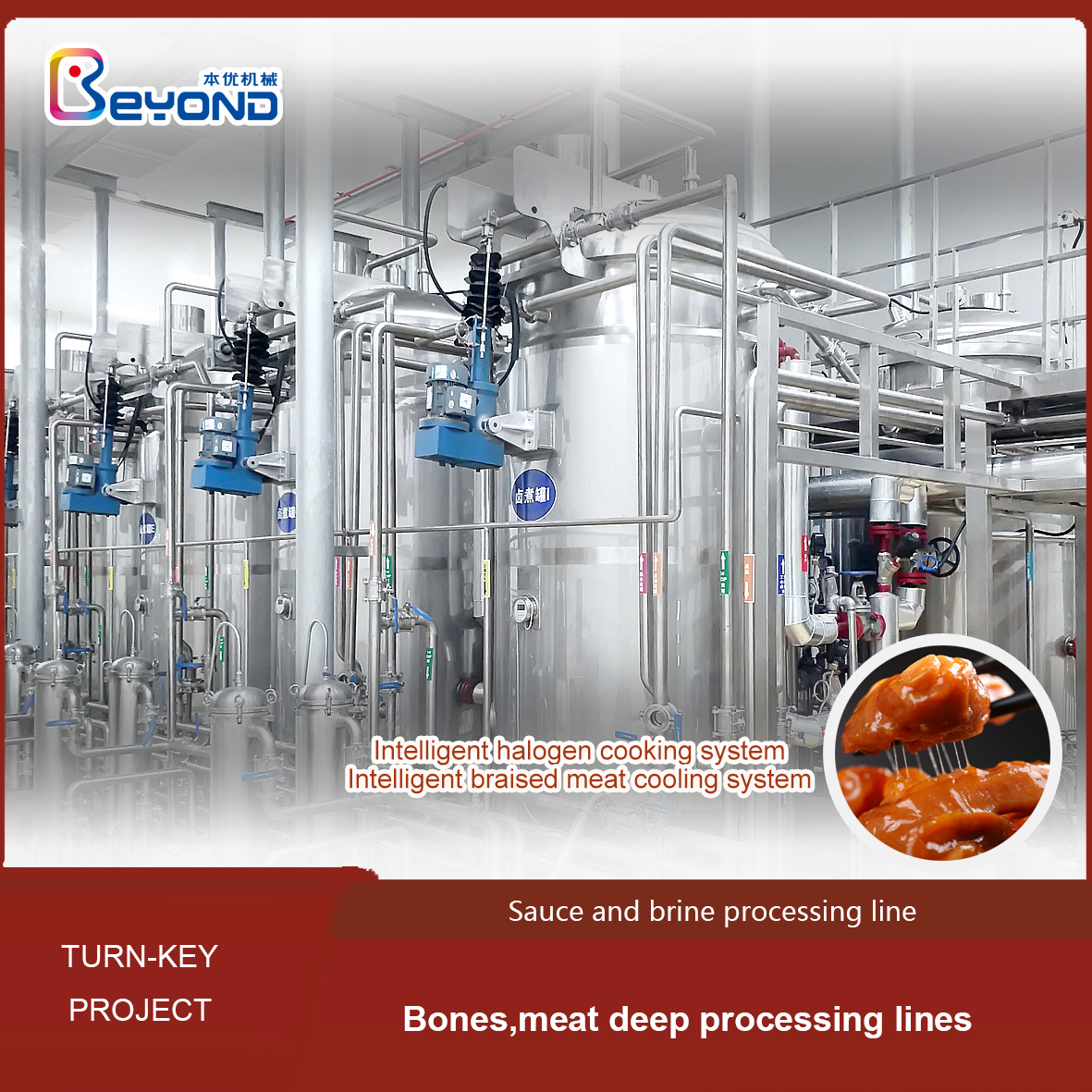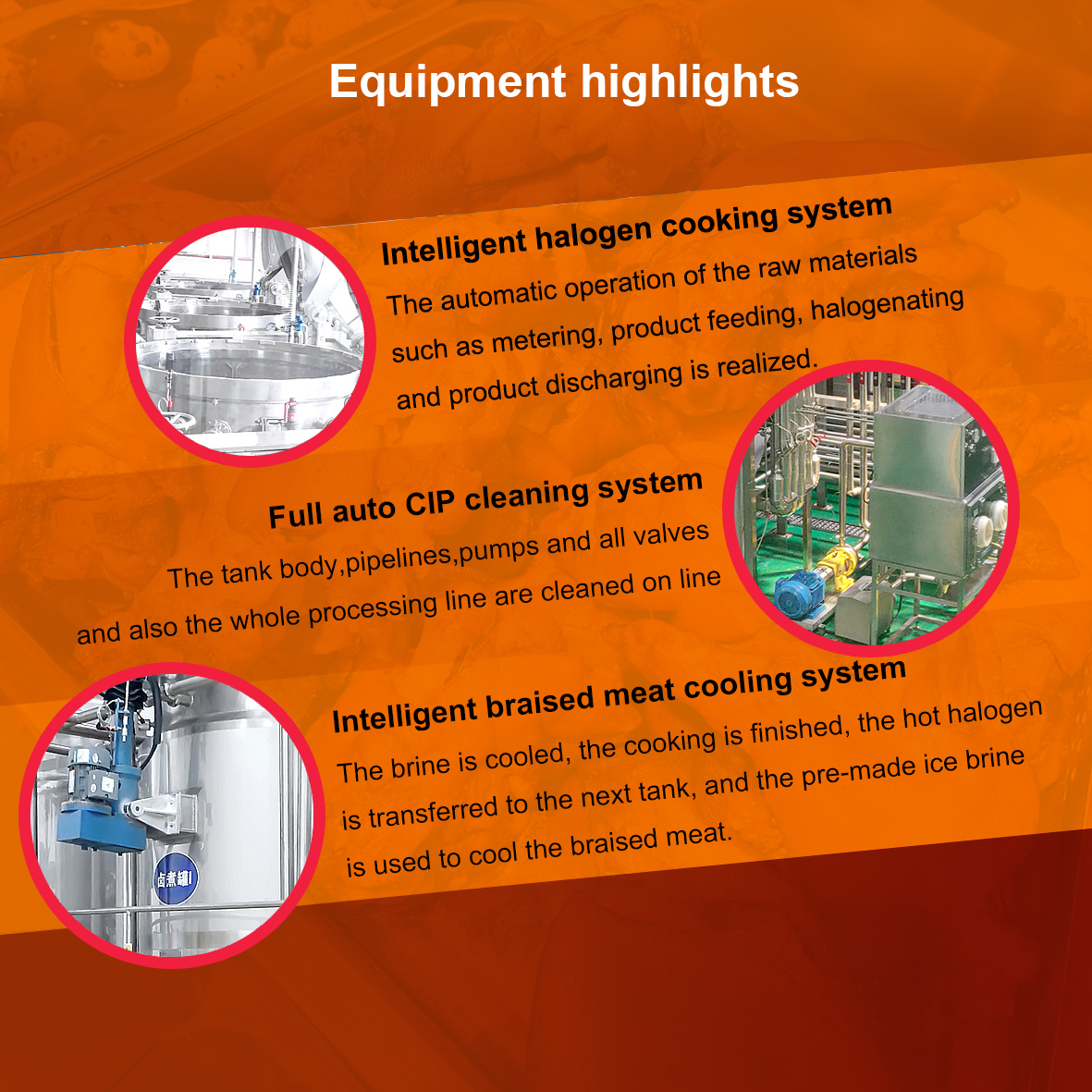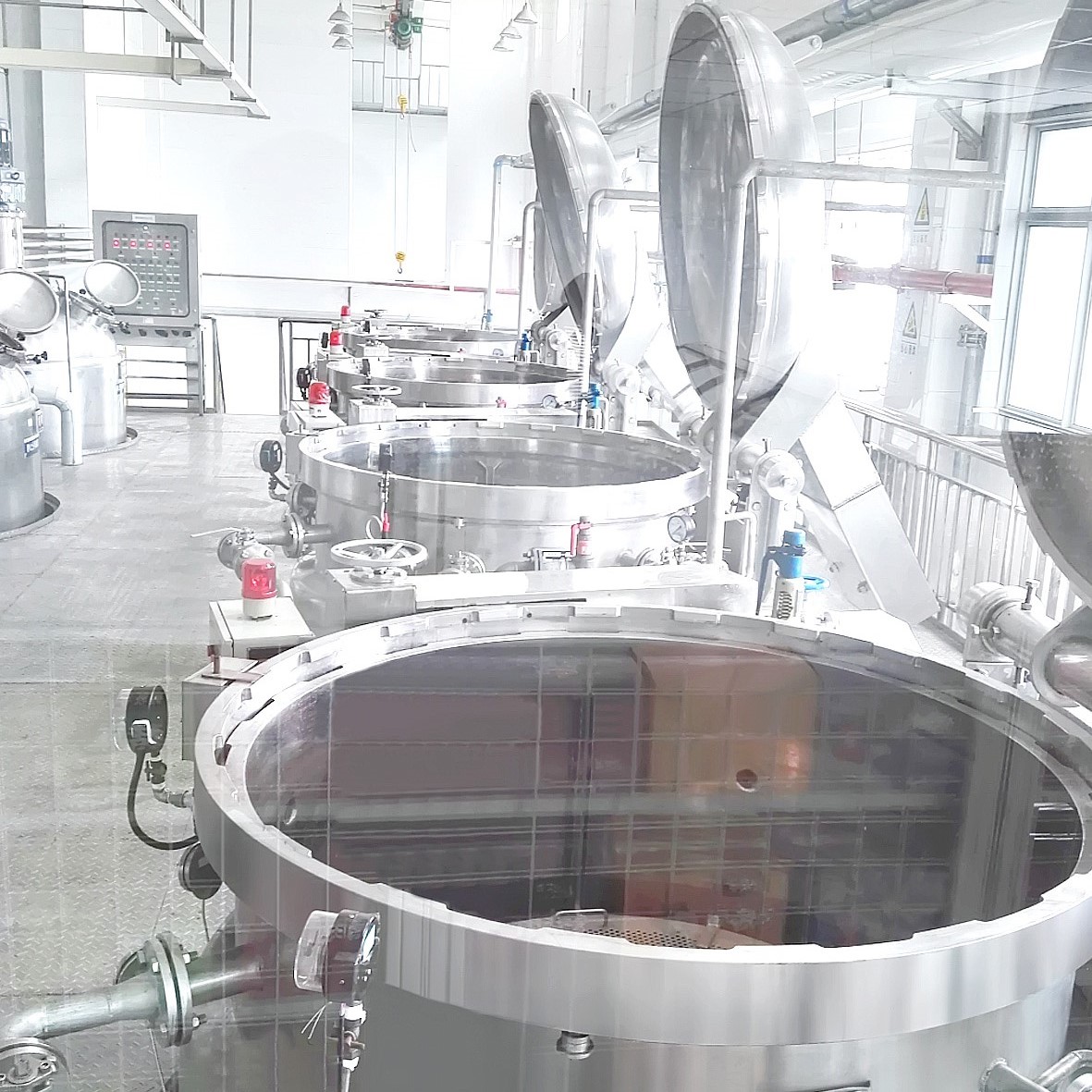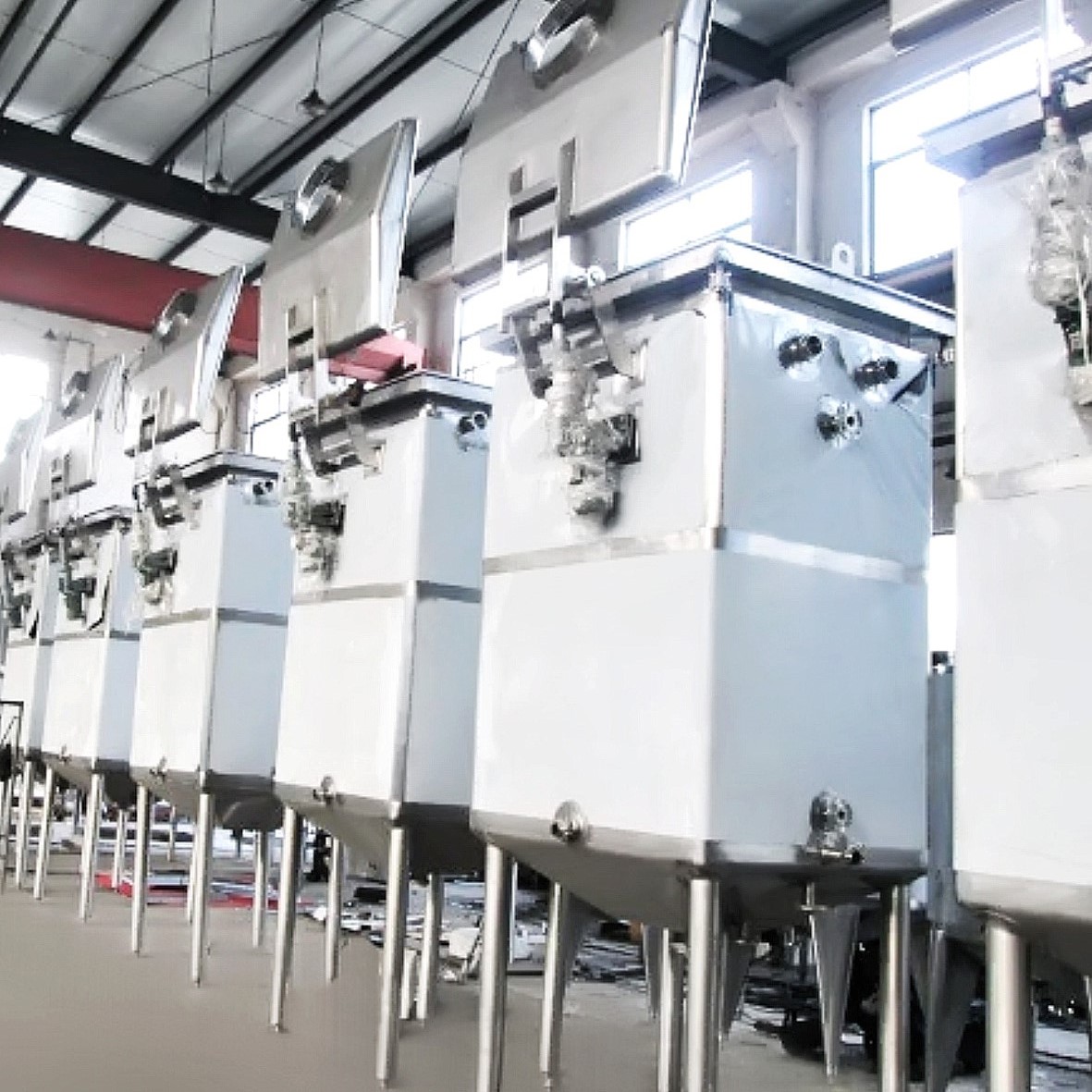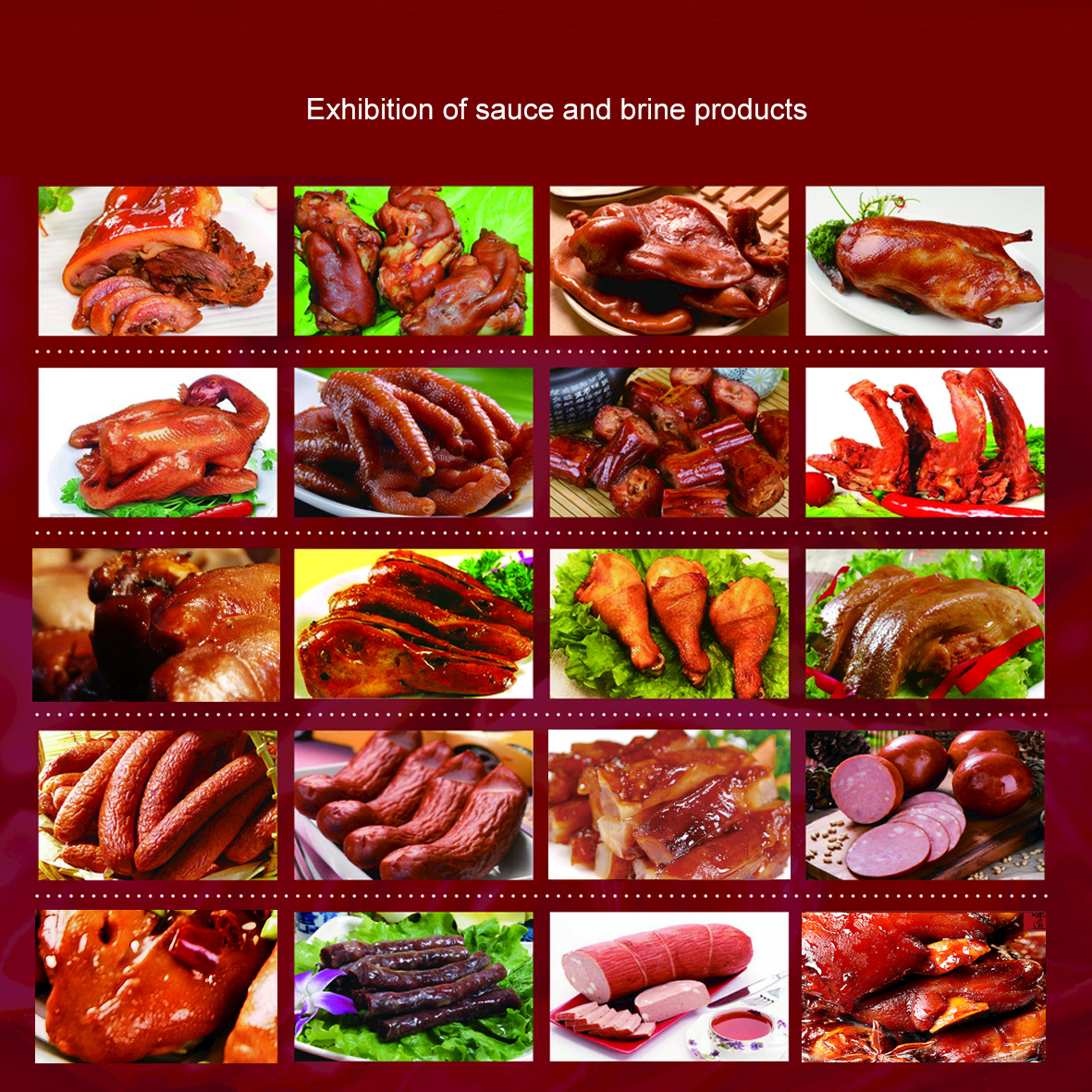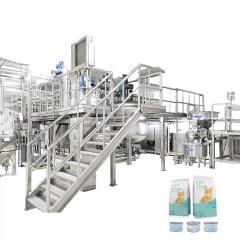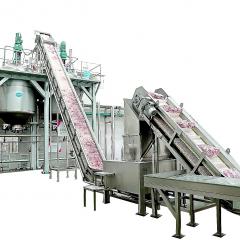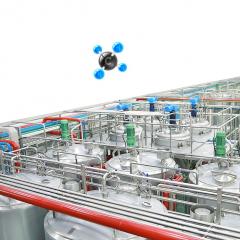
A sauce and brine processing production line typically involves several stages and equipment to produce sauces and brine products. Here is a general overview of the process:
Ingredient Preparation: Raw ingredients such as vegetables, fruits, spices, and other flavorings are prepared, washed, peeled, and cut according to the desired recipe.
Mixing and Blending: The prepared ingredients are then mixed and blended together in specific ratios to create the desired sauce or brine mixture. This can be done manually or using automated mixing equipment.
Cooking and Heating: The sauce or brine mixture is then cooked or heated to the required temperature to ensure food safety and quality. This can be achieved using various heating methods such as steam, direct fire, or induction.
Pasteurization: To ensure product safety and extend shelf life, the sauce or brine is usually pasteurized. This involves heating the product to a specific temperature for a certain period of time to kill any harmful bacteria or microorganisms.
Cooling: After pasteurization, the product is rapidly cooled to prevent further bacterial growth and maintain quality.
Homogenization and Emulsification: Depending on the type of sauce being produced, additional steps may be required to homogenize and emulsify the mixture, ensuring a smooth and consistent texture. This can be achieved through the use of high-pressure homogenizers or emulsifying machines.
Packaging: Once the sauce or brine mixture is ready, it is transferred to packaging equipment where it is filled into jars, bottles, or other containers. Automated filling machines can be used for efficient and accurate filling.
Sealing and Labeling: After the containers are filled, they are sealed using capping machines or induction sealers to prevent leakage and maintain product freshness. Labels with product information and branding are then applied to the containers.
Quality Control: Throughout the production process, quality control measures are taken to ensure that the sauces and brine products meet the desired standards. This can include regular sampling and testing for factors such as taste, viscosity, pH level, and microbial content.
Storage and Distribution: The packaged sauces and brine products are then stored in appropriate conditions, such as cool and dry environments, before being distributed to retailers or customers.
It's important to note that the specific equipment and processes may vary depending on the type of sauce or brine being produced, as well as the scale of production.
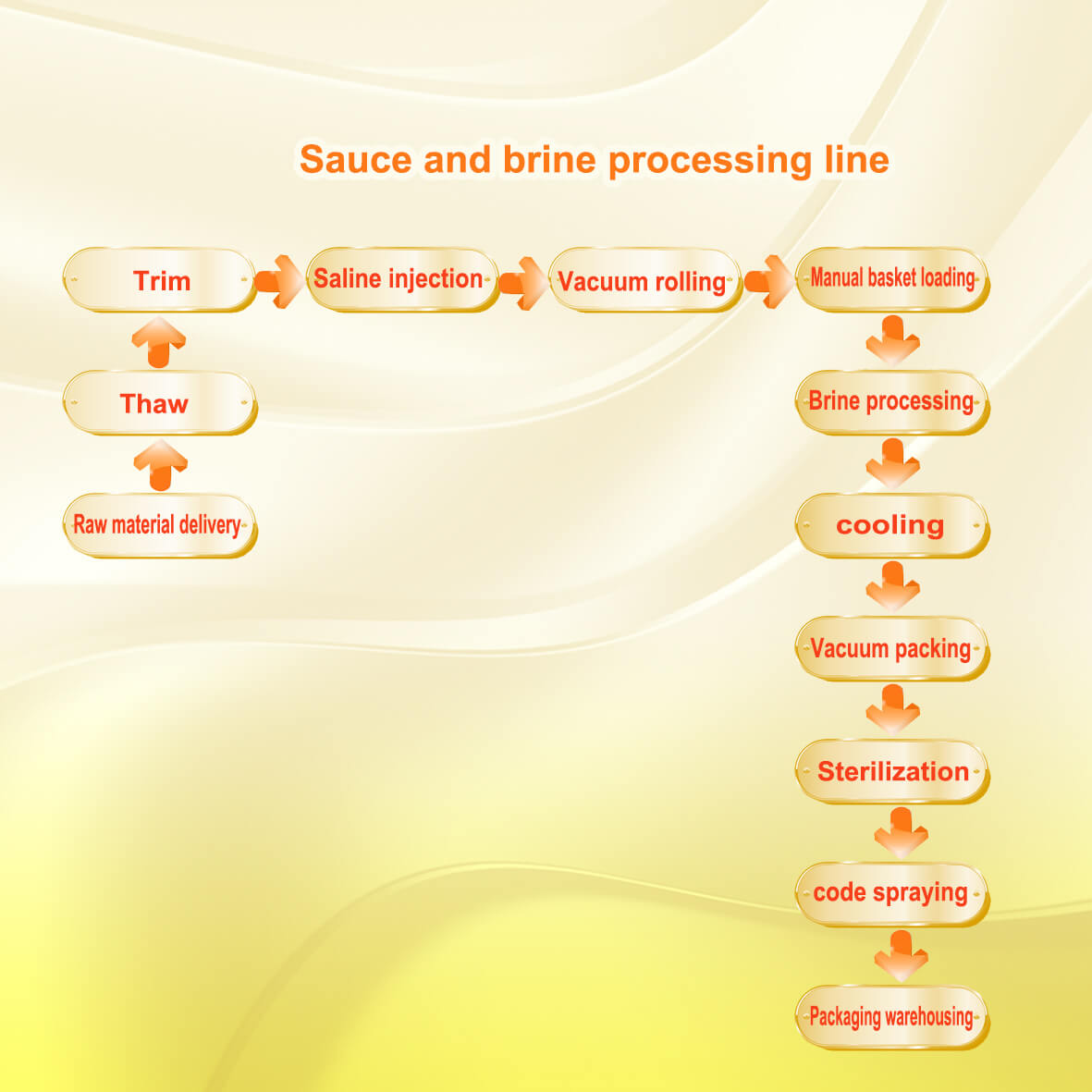
Intelligent halogen cooking system
The hanging basket type halogen cooking design greatly reduces the labor intensity and operating comfort of the operating staff. In combination with the advanced quantitative halogenation concept, the automation and standardization of complete sets of equipment are realized under the premise of ensuring the quality, aroma and color of the braised meat, and the automatic operation of the raw materials such as metering, product feeding, halogenating and product discharging is realized.
Intelligent braised meat cooling system
The brine is cooled, the cooking is finished, the hot halogen is transferred to the next tank, and the pre-made ice brine is used to cool the braised meat, which not only increases the cooling rate, but also improves the production efficiency, and the meat is cooled in the marinated soup, not only the heat utilization. The rate is high, the conduction is fast, and the surface of the meat remains intact, the product is good, and the yield is high.
